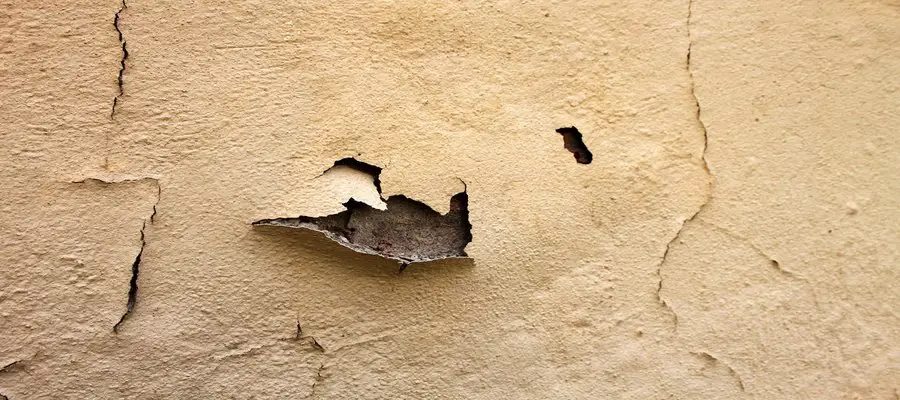Do you want to know how to stop paint peeling on wood? There are a number of common mistakes we make when painting wooden indoor furniture.
These mistakes are normal the first time we carry out painting, and it can spoil the painting project. To prevent paint from peeling on wood, it is extremely important to follow the steps below.
How to Stop Paint Peeling on Wood
-
Prepare the Wood before Painting the Furniture
In order to paint wood, it is essential to prepare it correctly. This is the basis for a perfect painted finish, especially if you want a very smooth lacquered finish.
If the furniture’s surface has previous paint or varnish, it is best to remove the old finish, especially if it has several coats, or is old varnish. That is because new paint can come off when applying the outer coats.
If the furniture is made of raw or natural wood, the wood must be free of the “hairs” and small splinters that the new material sometimes has. For this reason it is necessary to sand it. The best way is to use steel wool or a fine-grained sponge (or sandpaper block). Then, remove dust with a lint-free cloth or rag.
-
How to Stop Paint Peeling on Wood – Use Primer or Sealer on the Furniture
When painting wood you must use a sealer base, with which you “close the pore” of the wood. With this you get that:
- The wood does not absorb more paint than necessary
- The paint adheres better, and we prevent it from peeling off
If you opt for all-in-one paints, make sure they are suitable for the material you are painting. For example, make sure they are ideal for wood, which is more porous, than iron.
If the furniture you want to paint is made of melamine or a non-porous material, it is essential to clean it well and apply a suitable primer.
Remember there are specific primer types for all materials and others “universal” that adapt to most. The aim is the same: to prevent the paint from lifting in the future.
-
Sand between Coats In The Process Of Painting the Furniture
To paint like a professional, you have to sand. This is one step that most beginner painters forget. Although it may seem the opposite, there are always small imperfections on the painted surface.
For instance, from a hair on the brush that we have had to remove, to some little hair on the wood that gets up when painting.
If we sand, very smoothly, we manage to make these small imperfections disappear. In rustic-type finishes, it is not so important, but it is if you want a smooth and perfect piece of furniture.
Afterwards, you must remove the dust with a cloth that leaves no residue.
To find out if the wood is ready, run your hand in circles over the surface, and check that it is smooth and even. This step takes hardly any time and makes up for the results.
-
How to Stop Paint Peeling on Wood – Respect the Drying Times of the Paint
This is one of the most important steps. Follow the manufacturer’s instructions because drying times are different depending on the components of the varnishes. And it is important to respect them. Moreover, you should keep in mind that:
- Sanding a layer of paint that is not completely dry will damage it
- Painting on a previous layer that is not well dried will drag the previous layer out, leaving a non-uniform appearance, or will form clumps and lumps
In any case, you will have ruined the work done so far.
-
Protect the Furniture When You Paint It
Whether it’s a clear wax coating, a patina or a protective varnish, it’s important to protect the finish of the furniture that you apply paint on. It will give more luminosity, and protect the paint from small scratches and stains from liquids or other products.
In the case of wax, moreover, it is very easy to renew it, which is important for the maintenance of your furniture.
-
Do not Paint the Furniture in the Sun or Outdoors
The sun and air can spoil your work when you’re painting indoor furniture. Although it is pleasant to work outdoors in good weather, it is advisable to use spaces with good ventilation.
Outdoors, it may be suitable for sanding and cutting wood, but when you are painting, it can become a problem.
The sun accelerates the drying of the paint, and some paints have components that react to the direct sun in such a way that they crack, form blisters, or bubbles.
In addition, a breeze or a light wind can blow pollen or leaf debris into your paint, which will also damage the finish. In addition, don’t forget about small insects.
On the other hand, drying quickly will prevent you from touching up the paintwork while it is still wet.
Conclusion
So, if you want to work outdoors, make sure the sun doesn’t get in the way of the products you use and find a place away from direct sunlight and wind. This is true for indoor furniture, but these precautions, with respect to wind and insects, are also valid for outdoors.

